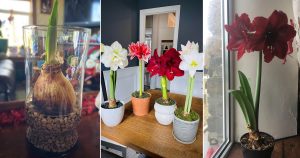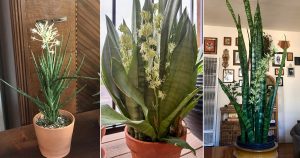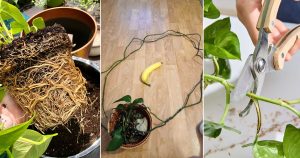If you’re like me, your tiny outdoor space is just not enough room to contain your love of plants, so you have some indoor plants as well. And, if you’re also like me, you share your apartment with a feline or two (or four!). Surely then, you’ve figured out this little formula: Cats + indoor plants = half-eaten plants. But how in the heck can the two (plants and cats) coexist?!
First, it’s important to know which plants are poisonous to cats. The ASPCA has a good list of poisonous plants, but a few common ones are Philodendron, Caladium, Ivy, Narcissus, Sago Palm and Peace Lily. This is kind of obvious, but you should never have poisonous plants where cats can eat them. And remember, cats are curious, determined, and can get into places you thought they never could. Also, plants in hanging baskets can drop their leaves where a curious kitty might take a nibble.
So, assuming you’ve eliminated all potentially toxic plants, here are some things I’ve done to keep my cats from damaging my plants:
- Buy kitty grass (or grow your own). Distract your cats attention and fulfill their desire to eat plant material by giving them something that you want them to eat.
- Put plants in places where cats can’t easily get to them. Choose trees with leaves that are too high up for your cat (and don’t place them near furniture the cat can use as a stepping stone to get to your tree) and also try hanging baskets.
- Observe what particularly attracts your cats. I’ve noticed that my cats really like long, thin, dangling foliage (probably because it moves easily and looks like something fun to play with). Don’t pick those plants!
- I’ve found that spraying something called “Bitter Yuck!” on my plants deters them most of the time. It was originally made to deter pets from licking wounds while they’re healing, and is made with Rosemary extract, which as Green Gardenista explains, cats don’t like. You can get Bitter Yuck! at pet supply stores. Test it in an inconspicuous area of the plant first to make sure that it won’t damage your plant.
- Rosemary brings me to the idea of using plants that cats don’t like. I’ve found that cats don’t like plants with a citrus or minty smell. You can also try putting something in the pot that has a smell cats don’t like, such as moth balls or lavender sachets.[UPDATE: As Kurt mentioned in the comments, moth balls can be toxic to cats if they eat it–which I think is unlikely because they don’t like the smell–but it’s not worth the risk. The safest way to use moth balls to deter your cat is to put it inside something with holes that will let the scent out but that prevents the cat from giving it a taste. Kurt recommends a jar with small holes punched in the lid. Check out Kurt’s website for more helpful tips about living with cats.]
- Whatever you do, don’t put mulch or small gravel to cover the dirt in the pot, your cat might think the material is a litter box. Having your cats turn your pots into a litter box is much worse that your cat eating the leaves!







